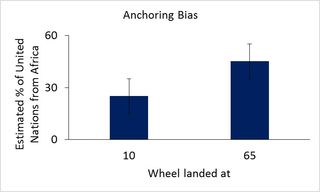Anxiety
Born Late: The Trouble With Due Dates
A classic study suggests what we get wrong about estimating delivery.
Posted April 18, 2016

On October 8, 2014, my son was supposed to be born.
He wasn’t.
Instead, I finally got to meet him two weeks later. Those intervening days seemed long—and I wasn’t even the one with swollen feet. Each day at work, I thought every buzzing phone could be my wife calling to report a contraction. I even plotted the percentage of babies that were born on a given day relative to the due date to estimate the probability that that day would be my son’s birthday.
Okay, I obsessed a bit.
Even if my actions went over the top, I doubt my feelings were rare. As you could probably imagine, about half of babies are born after their due date. But what may surprise people is exactly how far after the due date is normal.
The basic due date calculation is called Naegele’s rule, and it was devised by German obstetrician Franz Naegele in the early 19th century. To calculate it, take the onset date of the woman’s last menstrual period, add 9 months, then add 7 days. So if the last menses started April 1, 2016, the due date should be January 8, 2017. That amounts to 280 days between the last period and the due date.
According to recent studies, Naegele was mostly right. Statistically, the most likely day that your baby will be born is about 280 days after the mother's last period. The question is, how much wiggle room does an estimated due date contain?
I suspect that, since it is called a due date and not a due week, people would tend to guess that most babies are born within a few days of it. Hence, if my son’s due date was October 8, most people would give better than a 50% chance that he’d be born between October 6th and October 10th. The reason people are likely to guess that is due to a decision-making process that psychologists call anchoring. Anchoring was first described in a simple study by Nobel Prize laureate Daniel Kahneman and his longtime collaborator Amos Tversky. First they spun a wheel with numbers on it. For one group of participants the wheel was rigged to land on 10, and for another it was rigged to land on 65. Then they asked the participants to guess whether the percentage of United Nations members that were African was smaller or greater than the number on the wheel.
Easy, right?
Here’s where it gets interesting: Finally, they asked participants to guess the actual percentage of UN members that were from Africa. The group whose wheel landed on 10 tended to guess something close to 10, whereas the group whose wheel landed on 65 tended to guess something close to 65. They knew the wheel was giving them arbitrary information, but it still biased their final guess.

Based on that finding, Kahneman and Tversky proposed a strategy that people use to answer questions. To estimate the likelihood of an event, you create, or are provided with, an initial estimate—the anchor. Then, you adjust your estimate up or down until you reach an answer that satisfies you. The initial anchor influences your final answer because, in a sense, you’re tethered to it. Once the suggestion registers, you stick nearby.
This is what psychologists call a decision-making heuristic—a process we use to simplify a complex decision. It’s faster than going through the steps required to find a more precise answer, and it’s usually good enough. But it also leads to predictable errors—for example, your answer can be biased by a random number.
I suspect that calling something a due “date” anchors our estimate of how wide the range of births is. Sure, the due date is the most likely birthdate. But for any individual birth, the odds of a baby arriving on its due date are actually low. In fact, slightly less than 1 in 20 babies are born on that day. The days before and after have similar, but slightly lower chances. And in one of the largest studies on when mothers deliver, the standard deviation was 13 days around the due date. That means that about two-thirds of babies are born in the 26 days (13 before and 13 after) surrounding the due date, with the rest born outside that window. So if you take 10 women who expect to deliver on Valentine’s Day, chances are that 3 of them will actually have their babies in January or March.
Why, then, do we even give a due date? It’s simple, of course. But by making a larger window for an anchor—two weeks, say—it would help people have a better understanding of the uncertainty involved in predicting a birthday. It wouldn’t help an expecting mom’s back ache any less, but it may reduce the anxiety that occurs when the due date comes, and then goes, without anything happening.
Acknowledgements: Thanks to Matthew Sloan and Julie Rodriguez for comments and suggestions on this post.


